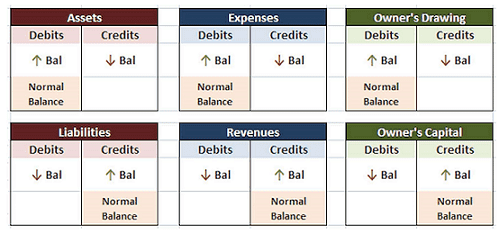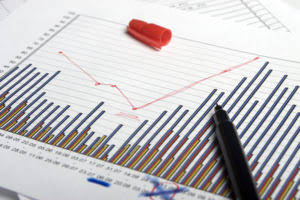
Otherwise, suppliers will be less inclined to grant credit, and the financial results of a business may be incorrect. This means that accounts payable must be processed exactly in accordance with a strict procedure that is followed in exactly the same way, every time. On the flip side, accounts receivable is the money owed to your business by customers. When you trade payables provide goods or services on credit, the amounts due are recorded in accounts receivable until you receive payment.
Invoice
The formula takes account of the average per day cost being borne by the company for manufacturing a product. The net factor gives the average number of days taken by the company to pay off its obligations after receiving the bills. An aging report categorizes unpaid invoices by how long they’ve been outstanding, typically in ranges like 0-30, 31-60, and 61+ days. It helps businesses monitor payment schedules and address overdue balances. Advancements in technology have transformed accounts payable processes, enhancing efficiency and accuracy.
- For the past 52 years, Harold Averkamp (CPA, MBA) has worked as an accounting supervisor, manager, consultant, university instructor, and innovator in teaching accounting online.
- Trade payable is used to refer to the money that a company owes to its vendors for purchasing either inventory or inventory related goods.
- Delaying payments can temporarily increase liquidity, but excessive delays may harm vendor relationships.
- Managerial approval might be required at this stage with the approval hierarchy attached to the bill value.
- A balance on the right side (credit side) of an account in the general ledger.
Maintain Clear Payment Terms
Examining invoices is essential to ensure the accuracy of data, so you’ll need to check the invoices received from your suppliers thoroughly. You’ll need to Remote Bookkeeping cross-check the goods received from your suppliers with those mentioned in the invoice and check whether you have received all the services that were mentioned in the vendor invoice. Once you have reviewed all the received invoices, you can start filling in the invoice details. The chart of accounts helps you track your accounts payable expenses in a proper manner, and you can also generate your chart of accounts in Microsoft Excel or Google Sheets. Further, the nature of the transaction is also considered when deciding upon the type of liability. For example, if the transaction relates to trading goods such as purchasing raw materials (for manufacturing industries), the payable is a current liability.

Business Management (SBM)
The journal entry includes the date, accounts, dollar amounts, debit and credit entries, and a description of the transaction. Acme posts a debit to increase the machinery asset account (#3100), and posts a credit to increase accounts payable (#5000). After recording above journal entry, the buyer sends a debit note (also known as debit memo) to the seller to inform him that his account has been debited for the value of goods returned.

Slavery Statement
When invoices and vendors are being managed manually, there is the risk of errors in processing, delays in payment and more. Picture a business that runs smoothly, where suppliers are paid on time, cash flow stays strong, and financial records are always accurate. Keeping track of what a company owes ensures steady operations and builds strong supplier relationships.
The accounts payable department also works to reduce costs by developing strategies to save a business money. For example, paying an invoice within a discount period that many vendors provide. Accounts Payable and Receivable are usually different departments in larger companies. However, smaller businesses may combine their accounts receivable and accounts payable into one department.
- A low DPO is considered to be a positive sign for a company’s financial health, as it shows that the company is able to pay its bills in a timely manner.
- AP represents all short-term debts your business needs to pay for general operations.
- To illustrate the three-way match, let’s assume that BuyerCo needs 10 cartridges of toner for its printers.
- But it differs in that they apply specifically to inventory or inventory-related items.
- This is the only point at which the company has leverage over them to obtain the form, so that it can issue a Form 1099 following the end of the year.
- On receipt, the goods are checked against the purchase order which is then matched to the invoice.
- Trade payables transactions are categorized differently and reported separately on the balance sheet.
- Confirm balances with vendors – For large or long-outstanding payables, contact vendors to verify what’s owed.
- However, small companies with low transaction volume don’t maintain special journals.
- The terms which indicate when payment is due for sales made on account (or credit).
- They are recorded as a current asset on the business’s Balance Sheet.
For instance, assume “Hero” is a company that prepares and sells various bakery items. Trade payable is a credit offered to the buyer against the purchase of goods or services received. The period allowed for credit depends on the relationship between the buyer and seller of goods or services. If a company wants to decrease its DPO, it can regularly monitor its accounts payable to identify and resolve any issues that may be delaying payment to suppliers. A company can also more quickly resolve supplier payment problems if it has accurate and up-to-date records.

What are trade payables?
- A company’s ability to manage its trade payables effectively reflects on its overall creditworthiness.
- A consulting firm integrates accounts payable processes into the ERP system.
- Some retail goods with high inventory turnover, like soap, may be paid off monthly.
- A firm’s management can compare its DPO to the average within its industry to see if it is paying its vendors too quickly or too slowly.
- Paying invoices in a timeframe that keeps cash flow liquid and obligators satisfied is a common challenge.
- Read on to get equipped with the info you need to use accounts payable and trade payable in your operations.
Let us look at their differences in the table below to avoid confusion. Closely tracking the trade accounts payable helps in estimating when specific bills might become payable. This, in turn, enables them to plan ahead for them and repay the amount owed on time. If your supplier has determined that you are a credible customer, you may receive early payment discounts on your accounts payable. This means while you’re receiving a discount on your accounts payable, you can give a discount on your accounts receivable to customers that make early payments.

Trade Payable (TP) is a subset of AP, specifically covering payments for raw materials or inventory needed for production or resale. For instance, employee wages, while part of your everyday operational costs, are not counted among trade payables. Here we’ll get to know trade payables, how they differ from their opposite (trade receivables) and how to account for them net sales properly to ensure harmonious cash flow.